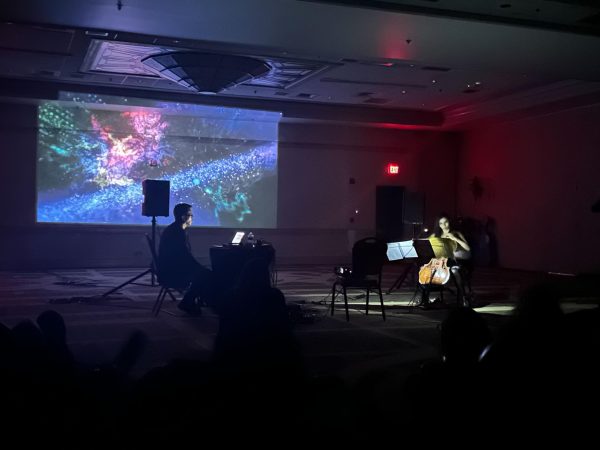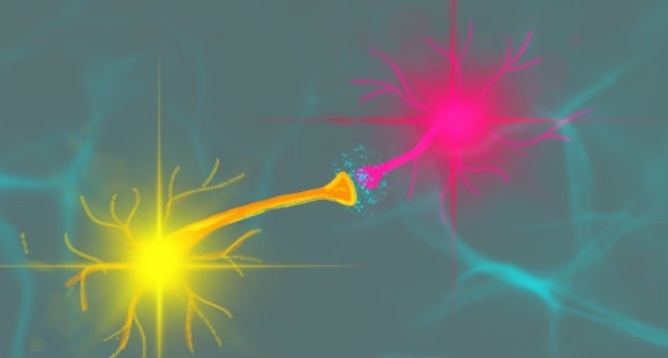Composer Felipe Pérez Santiago and cellist Cristina Arista took audience members on a journey through the cosmos, inviting them to consider humanity’s place in the universe and take responsibility for the climate crisis.
Santiago and Arista performed at an immersive concert event in the Leavey Center Ballroom April 18, highlighting the intersection between art and science. The event, which also featured a visual art exhibition and stargazing, was part of the Earth at the Crossroads 2.0 conference co-sponsored by the SETI Institute and The Georgetown University Earth Commons.
The Earth at the Crossroads conference brought together scientists, artists, journalists, historians and policymakers to consider how discoveries in extraterrestrial science and exploration inform our response to the climate crisis here on Earth.
Dagomar Degroot, associate professor of history at Georgetown and member of the Earth at the Crossroads steering committee, praised the event for its interdisciplinary approach.
“We think of Earth as just one among many other planets, so it’s taking a cosmic perspective. And that’s quite a unique thing actually,” Dagomar told The Hoya. “For that, you need a whole bunch of different specialists and different disciplines. But really you need to go beyond scholarship, beyond academia and involve the arts as well.”
Bettina Foget, director of SETI’s Art in Residence program, co-curated the visual art exhibition with Jonathan Keats, visual artist and member of the Earth at the Crossroads steering committee. Foget said partnerships between artists and scientists are particularly valuable because both often ask similar questions.

“What the artists here are doing is fusing art and science but from the beginning. Right from the concept stage with shared research questions and experimentation, and sort of exploiting the convergence points between art and science,” Foget told The Hoya.
At the concert, Santiago played seven original songs from the Earthling Project, which compiles samples of human voices from across the globe into thematic songs. Santiago also performed three original songs with Arista, combining cello and electronic elements. Santiago said he hopes the connection between art, music and science will help make the sciences more approachable for future generations.
“I think there is this terrible stereotype that science is boring or is for people that know a lot and are extremely intelligent,” Santiago told The Hoya. “So younger kids don’t want to approach science because they see ‘now this is not for me.’ I think art can maybe build that bridge and bring them closer, not only to music but to science.”
Arista said she is personally fulfilled by the intersection of music and climate action and the opportunity to use her music to promote a larger message.
“It’s very satisfying as a performer to have a message beyond the music that attracts other kinds of public,” Arista told The Hoya. “I just think it’s a great idea not just for the audience but also for the people who are creating it to feel like they’re doing something for the environment.”
Keats said cosmic perspectives on climate change allow people to see the Earth as part of a bigger system and understand the consequences of its overexploitation.
“By virtue of getting off Earth in our thinking, we are able then to look at what we’re doing here on Earth, to consider the decisions that we make, the impact of our actions, not only as a matter of comparison but also as a matter of self-reflection,” Keats told The Hoya.
However, the intersection of science and the arts is not unique to space exploration, according to Foget. As humanity confronts biodiversity loss, intense weather events, heat waves and decreased crop yields caused by climate change, Foget said incorporating the arts into the discourse on these issues could help motivate the public to action.
“It’s so important to not silo climate change in just the sciences because it is something that affects everyone,” Foget said. “So if you want to reach the general public, you need to cross disciplines into the arts, into the humanities as well, because the arts are a very effective strategy to connect on a human level.”








